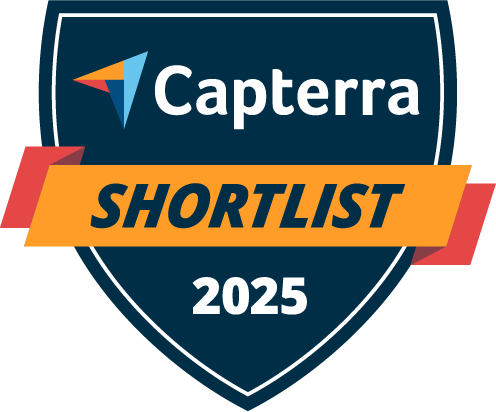Whether your organization is dealing with assets like computers and servers, or operating systems, it is crucial to proactively manage your IT assets’ lifecycle to maximize the devices’ lifespan and work productivity.
This is where ITAM (IT Asset Management) KPIs (Key Performance Indicators) come into play. A robust ITAM solution can provide your organization with insights about software subscriptions, software and hardware expenditure/usage, etc. This tool essentially converts the avalanche of asset information available into actionable insights by measuring its operations against KPIs for improved performance and asset utilization.
In this blog, we will discuss the importance of measuring ITAM KPIs for managing IT assets while exploring different key metrics that organizations should track and use to improve their asset utilization and ITAM processes on the whole.
What Are ITAM KPIs?
ITAM KPIs are quantifiable values that indicate how well your organization’s assets are being managed and utilized. When measured properly, IT teams can extract insights into ROI generated from these high-value IT investments. Using KPIs in IT asset management allows you to track asset management activities and performance to ensure they are utilized as efficiently as possible while complying with industry standards.
Moreover, they can provide useful insights about which devices need repair, which devices should be retired or replaced, etc. Tracking your ITAM tool operations against measurable KPIs helps you to:
- Stay transparent with your stakeholders and other relevant parties
- Monitor process performance
- Measure improvement and hardware deterioration against specified thresholds
- Make audit preparation easier
- Enhance accountability of resources and justify the future utilization of IT assets
- Stay transparent regarding expenditure and value of IT assets
- Compare your organization against your competitors and other industry benchmarks
- Act as a baseline for future decision-making
There are different hardware and software asset metrics, such as asset utilization, the number of assets under maintenance, the average cost of a workstation, software license compliance, the number of software licenses in use, etc. All of these are relevant and necessary to consider when looking at ways to optimize your organization’s IT asset management.
KPIs are only as powerful as the system tracking them.
IT Asset Management KPIs Examples and Key Metrics
1. Asset Utilization
With an ITAM solution, you can automate asset allocation and provisioning as per your organization’s requirements. It also gives you visibility into your organization’s IT asset landscape by providing a comprehensive picture of the usage of each IT asset and offering detailed reports on active software licenses, the worth of unassigned IT assets, and the frequency of every asset usage. This allows you to optimize your IT investments by not purchasing surplus and unnecessary hardware items and software licenses.
Additionally, you can easily control the under or overuse of assets to maximize efficiency while simultaneously taking a proactive approach towards their maintenance. In the case of hardware IT assets, tracking this KPI is even more important since these kinds of assets depreciate eventually as they undergo the kind of wear and tear that is associated with their regular use. Their maintenance and procurement thus need to be carefully considered so that there isn’t a significant lag between retiring a hardware asset and procuring a new one. According to a report, 33.6% of firms self-assessed their hardware asset management maturity as reactive. By taking proactive steps towards the maintenance and procurement of your assets, you can eventually improve your IT performance.
2. IT Asset Lifecycle Management
IT asset lifecycle management includes every stage of an asset’s lifecycle — from its procurement to its eventual retirement. A robust ITAM tool streamlines the procurement, operational, and retirement phases of an IT asset. You are notified when your inventory stocks reach a low threshold or when older IT assets are close to retirement so you can start the acquisition process for the new ones.
You can then track these assets through the operations phase to determine how they are maintained and utilized and to oversee the specific policies that provide structure for performing changes. As the IT assets reach the end-of-life phase, the ITAM tool allows you to retire and dispose of the assets as per your organization’s retirement protocols.
3. Software Licence Compliance
Tracking this metric with your ITAM solution allows your organization to maintain a centralized database of your software licenses. This will enable you to see the status of all active and expired licenses besides ensuring that there’s no kind of blacklisted or illegal software being used at your organization. Moreover, you can also use your ITAM solution to set up alerts or notifications when your licenses are near expiry and need to be renewed. This way, you can ascertain that all software currently in use at your organization is legally compliant with industry standards and doesn’t violate any kind of software vendor agreement. Considering that 69% of IT professionals are unsure if their organizations are in compliance with software license agreements, tracking this KPI with ITAM solutions is crucial. It is also vital in preparing your organization for any upcoming audits.
4. Asset Servicing and Maintenance
IT assets need regular servicing, maintenance, and upgrades throughout their lifecycle for optimal functionality. This is where an ITAM tool is especially helpful. An ITAM tool tracks all tasks related to servicing and maintenance to provide clear analytics about the average uptime and downtime of an asset. This way, you have a better understanding of your asset’s performance and know when it needs to be upgraded or replaced. This tool also automates your assets’ maintenance schedule so that no servicing task is left pending. You can track this KPI by monitoring the lifespan and efficiency of assets that have undergone regular maintenance and servicing work.
Turn KPIs into action, not just reports
5. Asset Downtime
This metric tracks when an asset is out of service due to an unexpected breakdown, malfunction, maintenance failure, etc. With this KPI, you can quantify the productivity of a particular asset by calculating how long it is out of commission.
The formula for downtime goes something like this: Total Downtime Hours Per Asset / Total Available Working Hours.
This measure tells your organization how reliable an asset is and how well any maintenance or upgrades have kept it in good working order. Since minimizing downtime is necessary for operational efficiency, this KPI also provides valuable insight into the kind of asset that is dependable and gives good returns on investment.
6. Mean Time To Repair (MTTR)
MTTR measures the average time it takes to restore a non-functioning asset back to working order. This maintenance KPI indicates the effectiveness of your organization’s asset maintenance processes.
The MTTR formula looks something like this: Total Maintenance Time / Number of Repairs.
MTTR offers insight into the time required to repair an asset. A high MTTR value indexes a slower maintenance response and a longer repair time, whereas a low MTTR value indexes a swifter response and repair time. A high MTTR usually means that your organization has gone through some unexpected downtime, leading to a period of low productivity. This KPI is essential for understanding your organization’s performance patterns.
7. Mean Time Between Failures (MTBF)
MTBF measures the average time between an asset’s failure or non-functionality. This KPI provides an asset’s maintenance and failure history to predict future breakdowns more accurately.
The formula for MTBF is: Total Working Time – Total Breakdown Time / Number of Hours.
Anticipating potential breakdowns through MTBF means you can set up a preventive maintenance schedule to sidestep asset failure opportunities. This schedule should ideally help extend an asset’s lifespan, leading to enhanced productivity and efficiency.
8. Syncing Assets for Optimization
Implementing an ITAM solution allows you to seamlessly sync all your IT assets, thus reducing potential security risks and other vulnerabilities in your organization’s IT infrastructure. Synching both your hardware and software assets will make it easier to enforce compliance with organizational security policies.
An ITAM tool gives you unparalleled visibility into your IT asset landscape. It provides data such as which IT assets have been synced within the last 24 hours, which have been reserved or checked out, which are freely available, and at what time, etc. Additionally, for high-value assets, you can even push verification requests before check-ins and checkouts to ensure that everything is in the right working order. This KPI thus helps you eliminate inaccuracies within your tracking system. AssetSonar is an example of an IT asset management tool that has integration capabilities with leading third-party apps like Zendesk, Jira, and G Suite.
9. Total Cost of Ownership
The total cost of ownership includes expenses like the initial purchase amount, maintenance and servicing costs, operational expenses, and the length of an asset’s lifecycle. This KPI is important as it helps your organization determine whether a particular asset is worth the investment by quantifying all direct and indirect costs associated with its function.
With this ITAM KPI, you can get a clearer understanding of what an asset costs your organization. For example, tracking hardware assets throughout their operational phase enables you to calculate their depreciation expense and the cost of any spare parts they might have required during servicing. In this way, your organization can make more informed decisions about upgrading assets (especially hardware items), shifting to a new asset vendor, or retiring costly assets that aren’t worth their operational expenses.
Why Are ITAM KPIs Needed?
It is difficult to overstate the importance of ITAM KPIs, as vital as they are in the effective management and optimization of an organization’s assets. They provide quantifiable values that help organizations optimize costs, improve risk mitigation practices, and lead to data-driven decision-making.
By tracking KPIs related to asset management expenses like return on investment (ROI), your organization can better understand where to cut costs, what kinds of assets to invest in, considering their operational costs and return rates, and if any assets are being underutilized. This reduces any unnecessary expenses.
Moreover, IT asset management performance metrics help with risk mitigation by ensuring your organization has the kind of security measures (encryption, access controls) necessary to avoid data breaches and unauthorized software usage. ITAM KPIs also improve decision-making by providing data on asset status and performance so that your organization is better equipped to plan effectively for future asset upgrades and other investments.
Thus, by understanding how these ITAM KPIs are linked to organizational needs like cost reduction and risk management, you can ensure that organizational IT management processes are aligned with your business’s broader operational goals. ITAM KPIs, in this way, essentially provide a guideline for measuring asset performance and quantifying success in terms of achieved goals.
Conclusion
In today’s data-driven business environment, making efficient use of KPIs gives organizations a competitive edge over their industry rivals. By leveraging metrics associated with asset performance, maintenance, and costs, your organization can optimize operations and achieve greater productivity.
Tracking ITAM KPIs such as asset utilization, MTTR, MTBF, and total cost of ownership gives your organization valuable insights into better managing your IT assets’ lifecycle. Effective IT asset management thus empowers you to make better decisions and create a more dynamic, agile IT environment for your organization.
Frequently Asked Questions
What is asset utilization and why is it important in ITAM?
Asset utilization measures how often assets are used vs sitting idle. It helps avoid over-buying, reduce capital costs, and improve ROI.
How do I track an asset’s lifecycle from procurement to retirement?
Use an ITAM tool that logs procurement date, maintenance & repair history, depreciation, and retirement/disposal info. The total lifecycle gives better cost visibility.
What does software licence compliance KPI track?
It tracks whether your usage of software matches purchased licences (seats, versions), checks for expired licences, and flags unlicensed or blacklisted software.
How can I reduce asset downtime using ITAM KPIs?
Monitor asset downtime KPI to see which assets are failing frequently, schedule maintenance proactively, and optimize repair workflows to minimize non-use periods.
What is MTTR (Mean Time To Repair) and how to improve it?
MTTR is average time taken to fix an asset after failure. Improve by better spare part availability, clear repair processes, trained staff, and use of ITAM-driven alerts.
What is MTBF (Mean Time Between Failures) and why does it matter?
MTBF measures how long, on average, an asset runs before failing. A higher MTBF means more reliability and fewer disruptions—use it to evaluate asset health.
How is Total Cost of Ownership (TCO) calculated for IT assets?
TCO includes purchase cost, maintenance, downtime, energy/utility, opportunity cost of idle assets, and disposal. Helps in comparing what assets really cost over time.
What KPI shows whether maintenance is efficient or not?
Metrics like asset servicing & maintenance cost, MTTR, MTBF, number of reactive tickets vs planned maintenance tasks show maintenance effectiveness.
How often should KPIs be reviewed in IT asset management?
Review monthly for operational KPIs (downtime, MTTR, utilization), quarterly for financial metrics (TCO, hardware refresh), and annually for lifecycle & compliance strategy.
How can I use syncing assets for optimization KPI?
This KPI tracks how often asset data is accurate and synced across systems (inventory, finance, CMDB). Clean data ensures decisions (procurement, retirement) are based on reality.
What KPI reflects risk from outdated or ageing hardware?
“Average asset age” and lifecycle status indicate risk: older assets tend to fail more, cost more to maintain, and may not meet security standards.
How do I measure software license usage vs purchase?
Track number of active users / installs vs number of licences bought, usage frequency, version use. Flag unused seats to reduce waste.
What does Asset Downtime KPI cover?
It’s total time an asset is non-operational due to failures, repairs, or unavailability. It affects productivity and cost; reducing it increases efficiency.
Why is asset lifecycle management KPI more than just tracking hardware age?
Because it includes all phases: procurement, deployment, usage, maintenance, depreciation, retirement. That end-to-end view reveals hidden costs and helps planning.
How can we present these KPIs to executives to justify ITAM investments?
Use dashboards showing ROI improvements (cost savings, decreased downtime), trends over time (e.g. rising MTBF), comparisons vs previous periods, and cost avoidance from proactive decisions.










